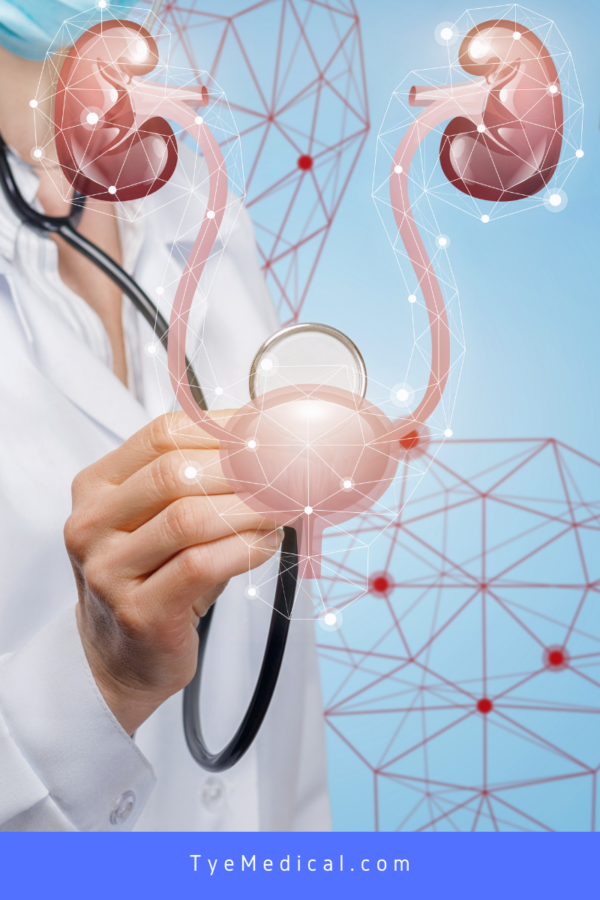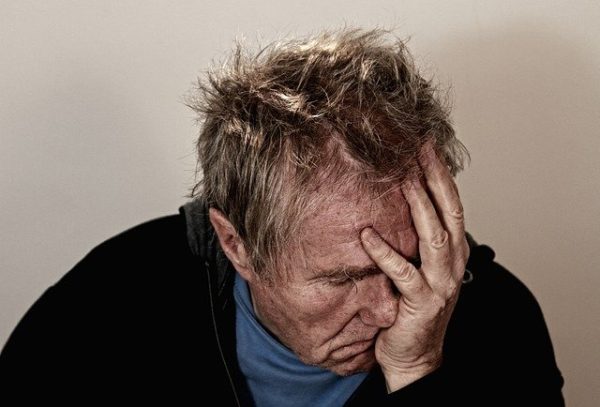A Brief Guide to Interstitial Cystitis
Written by TYE Medical on Oct 30th 2020
According to the Interstitial Cystitis Foundation, new research suggests the condition affects 4 to 12 million people in the United States. IC (interstitial cystitis), also known as bladder pain syndrome (BPS) is a chronic inflammation of the bladder that causes symptoms like:
- Pelvic and abdominal pain and pressure
- Urgency
- Frequent urination
- Incontinence
You might not suffer from all these symptoms and the severity can vary from day-to-day. It’s also common to experience flareups – periods when the pain, pressure, or other symptoms are intensified. Although no definitive cure exists, it’s possible to undergo periods of remission.
It’s best not to overlook frequent bladder pain and pressure. Instead, learn about the causes, symptom triggers, and treatments. Be sure to talk to your doctor about your symptoms.
Causes of Interstitial Cystitis (IC)
IC is one of those “mysterious” conditions that baffle researchers. However, they’ve narrowed down the causes to several factors that could potentially damage the bladder lining. These include:
- Weakened or dysfunctional pelvic floor muscles
- Autoimmune disorders
- Trauma to the bladder lining (i.e. surgical procedures)
- Repeated bacterial infections
- Excessive stretching of the bladder (from holding urine too long)
- Spinal cord trauma
- Hypersensitivity or inflammation of pelvic nerves
- Presence of inflammatory mast cells
You can experience pain and pressure simultaneously or separately, and the discomfort might increase as the bladder fills. Anything that jars or places additional pressure on the bladder will also increase IC pain.
Additionally, many people diagnosed with interstitial cystitis also have fibromyalgia and irritable bowel syndrome, which suggests a possible connection to a generalized inflammatory disorder.
Diagnosing Bladder Pain Syndrome
Unfortunately, there’s no conclusive test that identifies the condition, which means that it’s often misdiagnosed. Other conditions exhibit similar symptoms, so your doctor will want to rule them out before proceeding with an interstitial cystitis diagnosis.
Conditions with similar symptoms:
- Urinary tract infection (UTI)
- Endometriosis (women)
- Bladder cancer
- Chronic pelvic pain syndrome (men)
- Chronic prostatitis (men)
Complications Related to IC
Over time, bladder pain syndrome can trigger additional problems that affect various aspects of your life, causing:
- Pain during sexual intimacy
- Sleep disturbances
- Anxiety and/or depression
- Stiffening of the bladder wall that causes reduced bladder capacity (holds less urine)
The degree to which IC affects your daily life depends on the severity and frequency of symptoms and related complications. Some people live an uninterrupted life, while others experience heightened pain or complications that dramatically affect their abilities.
Interstitial Cystitis Treatments
There is no single cure for IC. However, you can manage the condition through a variety of treatments that deliver the most relief for your specific symptoms. Options include medications, lifestyle changes, and bladder procedures.
Medications Prescribed for Bladder Pain Syndrome
Your doctor might prescribe these medications individually or in combination. It’s important to understand the side effects before beginning treatment. Your doctor can help you navigate your best options.
- Pentosan polysulfate sodium (Elmiron) – to repair defects in the bladder wall
- Antihistamines (such as Claritin) – to decrease urgency and frequency of urination
- Nonsteroidal anti-inflammatories – for pain and inflammation
- Tricyclic antidepressants – to relax bladder and block pain
Bladder Instillation
If medications don’t adequately relieve your symptoms or aren’t recommended for other reasons, your doctor might suggest bladder instillation. During the procedure, your bladder is filled with a solution that contains dimethyl sulfoxide (Rimso-50), which is also known as DMSO. You hold the solution in your bladder for 10 to 15 minutes before emptying. Ideally, the solution will soothe the bladder lining, reducing inflammation. In some cases, this might also prevent muscle spasms that cause pain, urgency, and frequency associated with interstitial cystitis.
Bladder instillation requires a treatment cycle that usually includes two treatments twice per week for 6 to 8 weeks.
Bladder Distention
This procedure uses water or gas to stretch your bladder and increase liquid holding capacity. Stretching can help relieve symptoms and even interrupt the pain signals sent by bladder nerves. If pain is largely due to a frequently overfull bladder, this procedure might help. It typically takes 2 to 4 weeks before you notice improved symptoms.
 Electrical Nerve Stimulation
Electrical Nerve Stimulation
If your doctor believes that nerve damage is causing many of your interstitial cystitis symptoms, then transcutaneous electrical nerve stimulation (TENS) might be recommended. It sends mild electrical impulses through the skin, stimulating bladder nerves. The procedure can increase blood flow to the bladder, which strengthens pelvic floor muscles and might initiate the release of pain-blocking substances.
Dietary Changes
A change in diet reduces symptoms for many people with bladder pain syndrome because some foods aggravate symptoms. Anti-inflammatory diets often eliminate or reduce IC triggering foods like:
- Alcohol
- Chocolate
- Spices
- Tomatoes
- Acidic foods (citrus and juices)
- Caffeine
- Soy
If you are noticing symptoms and your diet has recently changed, consider eliminating one or more of the possible trigger foods for at least two weeks to determine if your symptoms improve. If you pinpoint an offending food, slowly add it back to your diet to determine your tolerance level. This will help you know if you must forgo your morning coffee or if your bladder can handle a cup or two.
Sometimes, IC symptoms appear or worsen after starting a vegan diet that is high in soy-based proteins like tofu, tempeh, and edamame. It’s recommended that you eliminate soy for two weeks to determine if it’s the culprit.
 Other Lifestyle Factors
Other Lifestyle Factors
According to researchers, stress and anxiety reduction improve interstitial cystitis symptoms for many people. While stress doesn’t cause IC, it’s known to worsen symptoms and can trigger flareups. Chronic stress and anxiety activate stress hormones and increase inflammation throughout the body. Both stress responses can impact the bladder. Many people with bladder pain syndrome also report high levels of stress or anxiety and benefit from stress management.
You might be surprised to learn that exercise can improve IC symptoms. First, exercise in general is a known stress reliever. Second, a low-impact activity like walking, yoga, tai chi, and low-impact aerobics or Pilates help to strengthen your core and even the pelvic floor muscles that support your bladder. Additionally, for more extensive pelvic floor strengthening, you can see a physical therapist that specializes in this area. For tips on getting started with a free exercise program, check out our article Workout at Home: Best Apps for Any Age (and Fitness Level!).
Surgical Options
When less invasive options fail to relieve severe symptoms, surgical procedures might benefit some people. In rare cases, patients undergo surgery to increase their bladder size or to treat (or remove) bladder ulcers. Sometimes, bladder distention doesn’t stretch the bladder enough and a surgical option is required to enlarge the bladder and increase capacity.
Long-Term Outlook
Symptom management remains the primary goal of interstitial cystitis treatment. Since no cure exists, doctors and patients focus on finding a combination of therapies that provide the greatest long-term relief from symptoms.
Many IC patients take comfort in knowing their condition isn’t life threatening or cancer-causing. Additionally, most people find an acceptable amount of relief from their pain, even though chronic symptoms persist. For information about managing bladder pain syndrome, visit www.ichelp.org.


